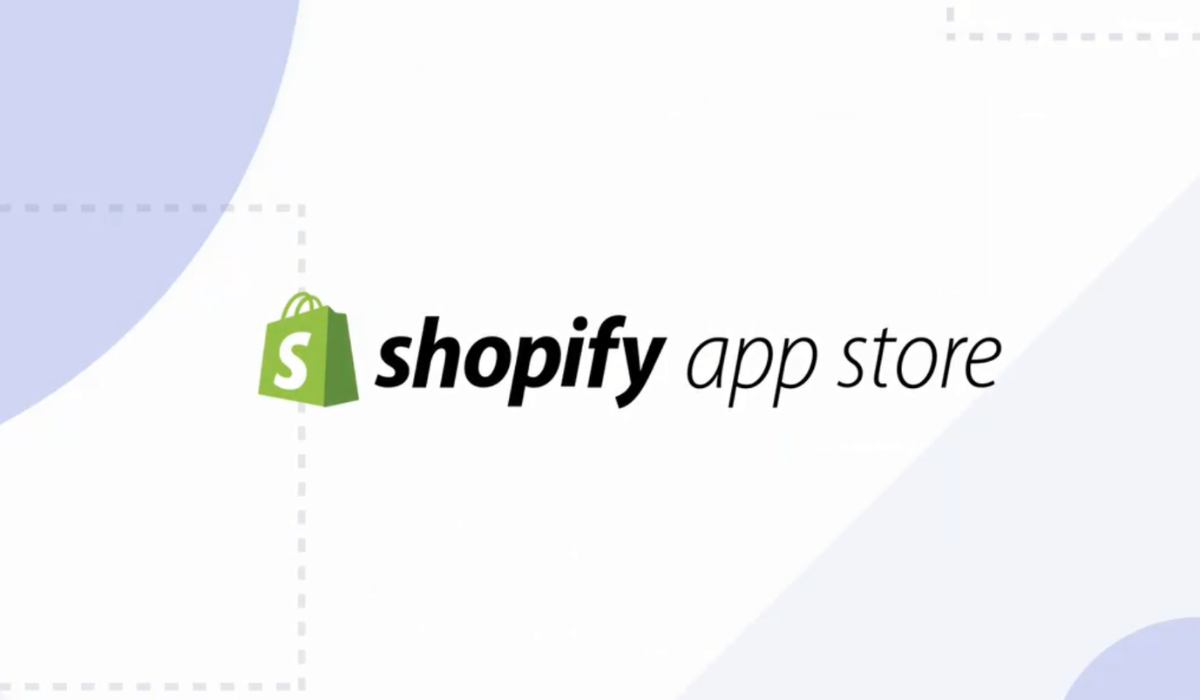Build Brand Recognition for Your Shopify Store
In just 11 minutes, you’ll be able to turn your unknown brand into a category leader. Read this post, where I will tell you exactly how one Shopify store overcame the obstacle of trust faced by new and unknown brands, and became a category leader in just 18 months.
You will get the exact tools and methods this brand used, along with the results they got. And you’ll be able to implement these in your own brand and Shopify store.
Dock a what?
A while ago, a close friend of mine gave birth to her third child. Naturally, I asked her if there was anything she wanted as a gift. When she replied that nothing special came to mind – he’s a third child soon to be the prince of hand-me-downs – I was getting ready to get her a gift certificate. When suddenly, while browsing Pinterest, I came across this pin:

Being a sleep-deprived mother, the first thing that caught my attention was how peacefully the two babies in the photo were sleeping.
But being a content marketer, what really caught my attention was the number of pins this photo got: 126.9k.
You don’t have to be a content marketer to know that baby photos can go viral. But you do have to be a content marketer to know that it’s near impossible to get users to pin purely commercial content – even if it features babies.
Go on Pinterest and search for any brand of diapers, for example, Pampers or Huggies. You won’t find anything even remotely close to a pin with 126.9k saves. And here was an unknown brand – DockATot -- totally nailing it. The marketer in me was intrigued.
Let your customers show you off
I set off on a little investigation. The first thing I did was search for DockATot on Pinterest. I wanted to learn whether this pin was a marketing fluke.
It wasn’t.
Sure, some pins by DockATot were getting “only” 170 pins. But others were reaching anywhere from 900 to 53K saves.
This in itself was enough to make me want to dig deeper. But there was more. The two pins below raised two additional questions.
On the left – another photo originally pinned by DockATot, with over 31K saves. On the right – a photo originally pinned by a user not-related to DockATot, with 53.6K saves. Both photos are of exceptionally high quality.


It seemed like this brand had an endless pool of excellent product photos. It made no sense. Product photos are very expensive to produce. And besides, from what I could tell, the brand only had a limited number of products, so why would it need so many product photos.
And so, I went to their website. Here’s what I found:

This above is a page from DockATot’s Shopify store. It features dozens, if not hundreds, of photos of sleeping babies. Sleeping babies and five star ratings – which indicate these weren’t generated by the brand or by an ad agency. It’s purely user generated content (UGC), all featured in one beautifully designed page titled Reviews. This looked like the content that was being pinned.
Since many of my clients are new brands opening Shopify stores, I decided to approach DockATot and learn firsthand how they were able to get these results. I am now sharing with you what I’ve learned.
Pinpoint your biggest challenge, then build a strategy around it
Look at this screenshot, for example, it’s what you get when you Google DockATot. The brand is associated with all the right search terms for its space.

I asked Elina Furman – DockATot’s Marketing Director – about this. She told me that it took the brand – admittedly with a very good product – only 18 month to reach these results.
But how?
The first thing Furman did when she set off to build a marketing strategy for DockATot, was to pinpoint its biggest marketing challenge: Getting customers to buy from a brand they didn’t know.
While this is usually the case for new brands, their product faced two additional challenges:
- A high price point.
- A product designed for babies and involving their safety.
Furman realized her strategy had to be one of building trust for the brand. Since she also had to do this on a budget, she decided to rely on User Generated Content (UGC) – an effective method for brands with a limited budget and a need for trust, but also a challenging method.
She set two goals:
- Building trust for the product
- Building brand recognition
Here are the exact goals she set, the methods she applied, the tools she used to execute them and the results she achieved.
Read them carefully and you’ll be able to implement them in your own Shopify store and brand.
Goal: Building trust for the product
Method: Crafting engaging messaging
Result: Messaging echoed by customers
Having a good product and even happy customers is a good start, but it’s not enough. To build trust for your product through UGC, you need to supply your happy customers with two things: Motivation to review your product, and an easy way to do it. The motivation, in DoctATot’s case, was achieved by precise and engaging messaging.
The first thing to know about effective messaging, is that it should not be about your product’s features, but about the value it brings to the people who are using it. And while the messaging on DockATot’s site did focus on the baby’s comfort and safety, Furman created a slightly different messaging for marketing purposes.
This messaging didn’t focus on the Dock’s features – like comfort and safety – but on the value it brought. In short, how much sleep the baby, and therefore the baby’s parents, were getting by using the Dock.
This was a narrative. A story customers identified with and were happy to tell. Because it meant they weren’t talking about a product, but about themselves, their new lives and their achievements measured in sleeping hours. This, in short, was their motivation to create content (see below).


This messaging was a huge success; it became the main narrative for all the product reviews. See below how it’s echoed on the store’s reviews page.

Success: Messaging understood, adopted and echoed by customers.
Take away: Craft your messaging around your product’s value, not its features.
Goal: Building trust for the product
Method: Collecting customer reviews
Tool: Loox Photo Reviews
Once Furman and DockATot had crafted a message customers identified with and were happy to spread, they had to give their happy customers an easy way to talk about it.
Customer reviews are almost an obvious choice for this task. Furman tried a few product-review apps for Shopify before choosing Loox Photo Reviews.
Loox sends automated requests to your customers, asking them to review the products they purchased from you. It encourages them to accompany their review and rating with a photo of the product in use. It then displays the reviews on your Shopify store, either on the product page or on a separate Reviews page.
Furman explained she chose Loox over other apps for two main reasons, which stem directly from her goals: The reviews look trustworthy, and they’re easily shared on social media.
“Customers are very concerned about where you got your reviews,” says Furman, “What I love about Loox is the fact that it has a trusted feel about it, more so than other apps. Also, we could never go and take so many images ourselves.”
Here’s what it looks like. Note the trust-enhancing elements:
- A five-star rating system
- An authentic photo
- A Verified Purchase indicator
- A written review

As seen in the screenshot of the dashboard below, over time DockATot was able to collect over 2,000 reviews (averaging 20 reviews per product) which built trust for their products.

I contacted Loox founders, to ask whether there was a tipping point – i.e. was there a number of reviews needed to generate trust.
"We see a correlation between adding reviews to a product page and an increase in add-to-cart conversion,“ said Yoni Elbaz, Loox co-founder. “On average, our users see a 26% uplift in conversion. But it does depend on reaching a 'critical mass' of reviews for each product.
“Analyzing over 100,000 product pages from over 10,000 Shopify stores, we've discovered that once you've reached 10 reviews per product, the conversion increase stabilizes at a little over 30%.”

"Having said that", Elbaz adds, "the more reviews - the better, mostly because it’s also about recency. First off, because shoppers feel more confident that a store is active and will deliver on its promise when they see recent reviews. And also because having an ongoing stream of reviews provides fresh content that improves SEO".
Success: 2,187 reviews collected.
Take away: Leverage customer reviews with a trust-inducing tool.
Goal: Building brand recognition
Method: Leveraging trust with social media
Tools: Pinterest, Facebook
Now that some trust was gained for the product, Furman and DockATot set out to leverage this trust into brand recognition.
The first thing they did, was utilize the reviews they already collected. Let’s quickly recap what those reviews included:
- A compelling narrative – about newborn babies sleeping through the night.
- Engaging real world photos – of adorable babies.
- A verified purchase indicator – putting people’s minds at ease that these were not a marketing stunt.
- Prominent social share buttons.
Since the few reviews they collected had share buttons, DockATot tried to get them in front of people in hope that they will share them further.
To do this, they shared the reviews themselves, on Pinterest, Facebook and Instagram.
The photos started taking off.
“This kind of photography just sells itself,” says Furman, “the reviews brought the power of social media into our site, because it allowed shoppers to show off. For a mom, this is the perfect photo op. They love to brag about how many hours of sleep it added”, she smiles.
I’ve showed you before how successful DockATot became on Pinterest. This screenshot shows that the reviews didn’t only get shared, they also sent traffic back into DockATot’s site.

Success: Over 10% of traffic to the site coming from social media.
Take away: Leverage your UGC by sharing it on social media.
Goal: Building brand identity
Method: Trial and error
Tools: Instagram, Planoly
So now DockATot had product trust and a certain amount of brand recognition through Pinterest and Facebook. What it needed next, for its brand recognition to really take off, was a cohesive brand identity.
And while they didn’t have the budget for some fancy branding agency, what they did have was their user generated content and a free platform that rewards great visual content – i.e. Instagram. Instagram was a natural choice for three reasons:
- Instagram is the best platform for strong visual content, and what stronger content is there than peaceful happy babies.
- The use of hashtags on Instagram enables self-branding, but also creating context and narrative for your brand.
- Instagram is effective for generating sales: The average order value on Instagram is $65, vs. only $55 on Facebook
Over time this proved to be the right choice. Reaching 227,000 followers took DockATot 122 weeks. And while this is very fast, it wasn’t an overnight success (I hope you already know there’s no such thing). DockATot’s Instagram account now has 346K followers – a sixth of what Tory Burch has, on quite a different budget.
It took time to figure out and refine the brand’s voice and get it just right. At first, it was all over the place.
Look at these screenshots of DockATot’s early Instagram feed


There’s a woman in a skirt twirling, a monkey doll in a Dock, product photos about a zipper, photos of babies with doodling on them, and a poster saying “coffee, then the world” indicating that parents were tired – the exact opposite of the brand’s messaging today.
So how did it go from that, to this cohesive, engaging and elegant feed?

Furman says, that to achieve this kind of cohesive brand identity, she recommends Planoly.
Planoly is a visual planner and scheduler for Instagram. It allows you to organize your posts in an Instagram-like feed before posting, so you can see exactly how all your posts come together.
Once she started putting posts next to one another, she could see which combinations were working well together and serving the brand’s identity, and which weren’t.
Once again, she used photos from reviews, quoting what customers were saying and mentioning them if she could find them. Gradually, DockATot’s feed started looking more and more like it does today and attracting not only followers, but parents posting their own photos and mentioning DockATot, which in turn re-posted this freshly generated user-content to their own beautiful feed.
Success: 346K Instagram followers, average Likes per post over 1,000
Take away: Don’t be afraid to experiment with your content and tweak it until you reach brand identity.
Final words
Success never happens overnight. It takes time, persistence and learning. But it CAN be achieved. See this early DockATot Instagram post. It doesn’t tell the story they’re telling today and it only got 19 likes.

Print it and hang it above your desk, along with the words of tennis legend Arthur Ashe
“To achieve greatness, start where you are, use what you have, do what you can.”
You’ve just learned how one unknown brand with a new Shopify store, overcame the challenge of starting from scratch and achieved success in just 18 months. Go ahead and put this case study to work, step by step. And you too will be able to establish trust, brand recognition and increase sales.
Daria Shualy was founder and CEO of two e-commerce startups, former head of content marketing for dapulse.com and is a creative strategist and go-to-market consultant to early stage startups and online stores.




